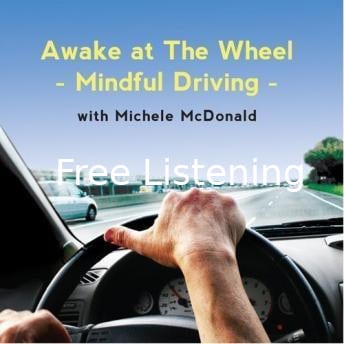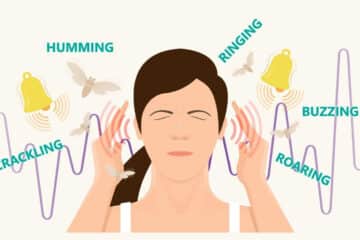The complete guide to mindfulness practices and exercises part 2
In the first part of this
In this second part, I discuss the informal practices and mind hack that are inspired by psychology and that are more directly aimed at ‘solving’
[ez-toc]
Informal mindfulness practices.
The number of informal mindfulness practices is only limited by your imagination. The main theme that runs through all of them is that you decide to perform one of your daily
Why is this necessary?
As you will soon discover after starting to practice mindfulness is that the practice in itself is really easy. Deceptively easy.
The only instruction given, is to watch whatever arises and be with it. And in most cases carrying this instruction out to perfection is equally easy.
So what’s the problem?
The problem lies in forgetfulness. No longer tha a few seconds after you started the practice of mindfulness, you forget what you were supposed to do. And you start thinking about something else.
And this is even more pronounced in daily life. Here you will not even remember that there is such a thing as mindfulness. You will be so engrossed in whatever you are doing that the thought of practicing will never occur.
That is why we need to familiarize ourselves with being mindful in daily life also. And we do this via dedicated, informal, exercises that we sprinkle throughout the day.
Note: There is growing evidence that having a regular dose of mindful moments throughout the day can dramatically improve your well being. Researcher Barbara Larivee has a book about just this way of practicing. You can check it out on amazon.
The solution
As I said, the most difficult thing about doing a mindfulness practice is to remember doing it. And once you are doing them, to keep on being mindful. This means that you will never remember to do the exercise, and once you do, you will engage in them and after about ten seconds, you will forget that you were even practicing and just do the rest on auto-pilot.
You should not worry or beat yourself up when this happens, it is perfectly normal,but there are two key strategies we can use to make the best out of our daily routine: hack ourselves to remember to do the practice and doing a small 1 minute mind hack to motivate ourselves for what is to follow.
Remembering to do the practice
There are 3 basic ways in which we can trigger ourselves to remember that we were supposed to do a mindful activity.
Colored stickers
A widely used technique it to put post-its or colored dots all over your house and working area to act as a reminder that you should do a practice.
This is a great way of doing but it comes with some caveats.
- First, you should put it on a spot where you can easily see it and come regularly. There is no use of sticking it to a place where you never come or where you will not see it.
- Second, it should not be a place where you come too often. If you do that, you will start to ignore it very soon. Like all the other stuff in our house we barely notice
- Third, you should place importance in this newly created symbol. Tell you yourself that when you see the sticker, you will acknowledge it and do the small practice you decided on. Else, you will not even see it once.
Set an alarm
Setting an alarm has many benefits. You can program it to be as frequent as you like and it will always be close to you. You do not need to be in a place where you are allowed to place stickers for it to work.
Unfortunately, alarms also tend to chime when they are really inconvenient. Especially when you are in the middle of your work or discussing something with your co-workers. You might then grow resistance to the alarm and stop ignoring it or stop it all together. Well, that is what happened to me.
So you need to find a frequency that fits your needs. I suggest that you experiment with this, but start of with a low frequency, like 3 times per day and work your way up from there.
Set a mind trigger
Mind triggers are similar to the stickers but now you can choose your item freely. And it does not even have to be an item. You can choose your trigger to be what you want. Like the phone ringing.
But, you will need to make it clear that if your trigger happens, you will take a mindful moment. And you will need to stick to it for it to work.
Examples of triggers
1 Minute Mind Hack
So now that you remembered that you needed to do a practice, you still need to make it through it.
Therefore, I recommend that you start with a small mindful mind hack. As such, it should go in the next section, but it is so useful that I include it here.
- First, start by quickly scan your current internal state. Check in with your body, emotions,
and thoughts. Do not try to alter them, we just want to have the current state of affairs. - Next, bring your attention to your breathing and focus solely on that. Stop paying attention to anything else.
- Finally, mentally state your intention to do the next activity with all the mindfulness you have available to you.
Do not underestimate the power of this little exercise. It will bring you into pole position and will greatly benefit you.
The practices
Here is a list of informal mindfulness practices for you to try. But remember that the aim is not to do whatever task there is before you. No, the aim is to do them mindfully. And to learn something from doing that practice.
Personal experience: On retreat, we do long stretches of meditation and are not particularly looking to learn anything from the practice. But, time and again, I notice that trough prolonged meditation, it’s sometimes like a light bulb going on. I just get something I have been struggling with. And once you know, the situation or problem has so much less hold on you. You can feel liberated.
Wel , for a short time anyway 😉
Brush your teeth
The first exercise I recommend you to try is to brush your teeth. It’s something you do every day anyway, so it’s easy to remember doing.
Just make sure that you program yourself to remember to do it.
So, pick up your toothbrush mindfully. Look at it as if you have never seen it. Try to bring some element of curiosity. Does it feel any different when you pick up your toothbrush in this way? Or do things stay the same?
Now put some toothpaste on the brush in the same way, and then start brushing your teeth. Make it a 4D experience: feel the brushing, smell the toothpaste, here the noise it make and be aware that you see your surrounding or yourself in the mirror.
Do some chores
For some people there is nothing more boring than doing chores, and for some, there is nothing that brings them more pleasure.
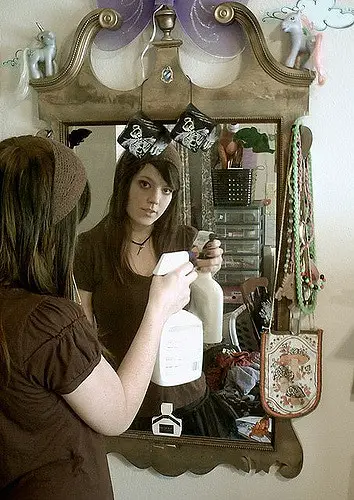
I used to be in the first category, dreading to clean the house, or washing the dishes. But now, these activities give me a sense of fulfillment. I changed sides.
The secret to not hating chores is to look at what completing you brings you (I love it when my house is clean!) and to do them mindfully. Off course, as these chores can take a couple of hours, do not expect to do them mindfully from beginning to end. For me, the goal is to do them without ruminating (to which I sometimes have the tendency).
In my case, this is part of the secret of why chores became more fun: I stopped ruminating about how dreadful they were. And lo and behold, they were more fun to do. It appears to have been something I maintained myself.
So the practice goes like all of the informal mindfulness exercises: make a commitment to do this one activity in a mindful way. Pay attention to the smallest details. If you are washing the dishes, feel the warmth of the water, the smoothness of the detergent, hear the noise the dishes make when they touch. There is so much to explore
Get dressed
Getting dressed can be used both as a concentration practice where you notice the how the fabric feels when you slip into it, you could smell the freshly washed clothes (or not so freshly smelling clothes of the party last night), but you might also take it as a full mindfulness practice.
In the full mindfulness version, you would look at the clothes you chose and notice what this is stirring up in your inner word. Are there any thoughts surging up (I look handsome/fat in this dress, I think people will take me more seriously with this tie, …) or emotions that come by (fear of rejection, anticipation, excitement).
Whatever comes up, just watch it. Do not try to alter it. Let whatever presents itself to you run its natural course. You might be surprised at what you discover.
Take a shower
For me, taking a shower is a surefire trigger to start planning the things I still need to do that day. I’m really not a good example of a mindful person when I take a shower 🙂
But that is no good reason to not keep trying
I really love to take a shower and spend quite some time in it when I do. And when I do it mindfully it is so much more enjoyable.
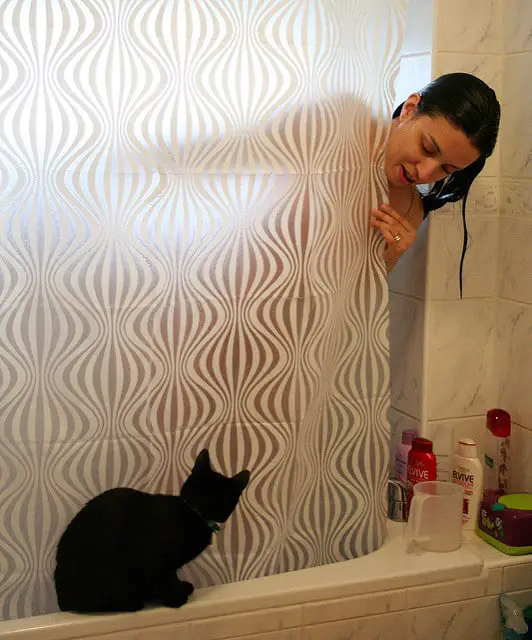
First, decide you will take a mindful shower. Next, take three small mindful breaths. Open the valve in a mindful way and let the water run. Hear the sound the water makes when falling down. Hear the noise the water makes when hitting the floor.
Next, move into the shower. Start by feeling the temperature of the water. Does it feel pleasant? Is it not too hot or too cold. You could also reflect on why you find this temperature suitable or not for you. Are there any preconceptions about yourself? Like: I’m a chilly person? Or: too hot water is bad for my skin.
Finally,
Pick up the phone
This is a small mindfulness exercise that can easily be combined with the next exercise, mindful listening.
But this exercise is more designed as a trigger. So whenever your phone rings, do not pick it up immediately. Let it ring three times and notice everything going on in you when you do this.
Chances are that you will feel uncomfortable at first. Just letting your phone ring three times without picking it up. Do not worry, people will not find it weird. Just try it and look with curiosity at what is happening inside of you.
Listen mindfully
This is one of my favorite exercises.
To listen with all you have to another person. When you listen mindfully, you take it all in. You give your full attention to the person talking to you. And that means using your other senses too. All too often I remark in myself that when I am not listening in a mindful way, I’m either looking elsewhere (my phone, screen, …) or preparing a reply on what the other person just said.

So next time somebody is telling you something, decide up front that you will not intervene in the story unless it is absolutely necessary. And if you do intervene, ask for clarifications. Do not give your advice or try to object to what they say.
And look at what just this simple practice is bringing you. Look at what is going on inside of yourself. Look at thoughts you want to express, but also at emotions like impatience.
If you are a bit more experienced with the practice, you can also add your visual information and start to see all sort of other clues of what the people are communicating in a nonverbal way (you can check out this free course in
Listening then becomes a whole new experience.
Half Smile
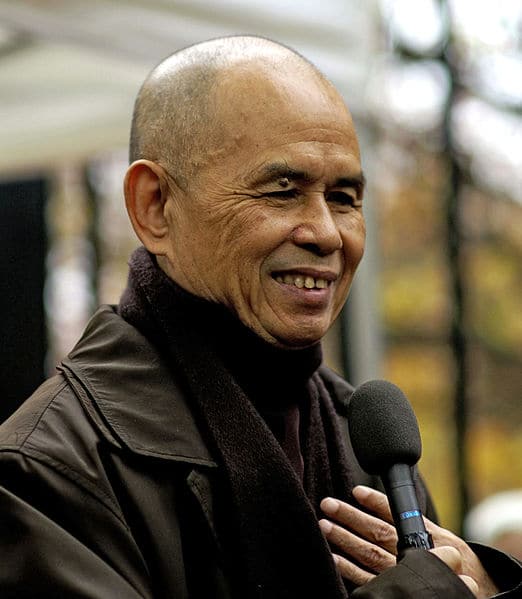
I got this lovely little exercise from the book ‘The miracle of mindfulness” by
Thich Nhat Hanh recommends practicing the half smile throughout the day. From the moment you get up until the moment you go to sleep.
You should start in the morning when you get up to give you a boost to start your day. There is nothing better than to start the day in a good mood. And doing a half smile while taking a couple of mindful breaths is one method to give you a head start.
Then, he goes on,
You would be surprised at how people treat you differently when you smile at them. But do not make it awkward or forced either. That is why he is suggesting to use a half smile. It is less intrusive or suggestive but still conveys the same friendly intention.
Finally, try to half smile when something goes wrong. When you accidentally drop something, or you miss the bus, or …. Just smile at it and try this little sentence: ‘as it is’. And see how it goes.
Stand in a long queue or wait at a traffic light
Why do I include standing at a traffic light or waiting in a queue? Don’t you just hate these activities?
Well, no, I don’t. At least not any more
Personal story: A long time before I started doing mindfulness, I had to drive home every day from work through dense traffic. And, it’s not to say I had road rage, but, I was pretty annoyed at the traffic. Until one day decided to stop doing that. Somehow, it made no sense. I was not getting any faster and I was just making my own travel more disagreeable.
From one day to the next, my commutes were far more enjoyable. Not that I did not drive in an assertive way, no, but I stopped being borderline aggressive in traffic.

So being mindful in a queue, traffic jam or before a red light is not about being masochistic, but about coming to terms with something you cannot change anyway. And this brings a sense of calm.
So next time you have to wait, be happy about it and take the opportunity to observe you own reactions. Just sense how you tense, or your thoughts about the subject (‘Why doesn’t this cashier work a bit faster’, ‘Figures, just when I drive by, the light turns red’) and ask yourself if there is truth to these statements.
And if they are, ask yourself if getting all revved up about the situation will change anything. And then, before you take action (because sometimes you might need to), take a few mindful breaths. Feel your body and relax just a little bit. And now re-evaluate the situation. Did your viewpoint change? Did it stay the same?
But, most importantly, be gentle with yourself. It is not an easy exercise. You will need some practice to start enjoying it.
Drive a car
There a few things where people experience the ‘autopilot’ more explicitly that when driving a car. Everybody has had the experience where you drove somewhere and did not know how the h*** you got there. Or driving to go to see your friends and find yourself on the way you take every day to go to work.
You just where on auto pilot.
Well now, I learned the trick to be more mindful at the wheel from Michele McDonald. Here, the trick is to anchor your attention to the feeling of your hands touching the steering wheel.
It does not have to be the breath that serves as an anchor. It could really be anything. She has a very good audio recording with mindfulness exercises done in the car. You can listen to these for free here.
But the gist of it is that whenever you drive your car, you lightly keep in touch with the feeling of your hands touching the steering wheel. You do this while keeping your eyes on the road!
And from this standpoint, you are now free to explore the rest of the body. You back touching the chair, your feet moving to
Be grateful
Expressing gratitude has a wide variety of benefits ranging from improved emotional well being to improved career outcomes and better social relationships. Science even found health improvements when being grateful.
It is an exercise I practice daily with my youngest son and it has indeed lifted up his spirits since we do this exercise.
Our daily routine is that at bedtime we tell each other 3 things that happened during the day that were nice. No more than that.
The things we tell are not earth-shattering. For him, it is often related to playing with his friends, for
But do not look to far. A nice cup of coffee is something you can be grateful for too. The cup will give you a nice feeling for the second time.
See the color blue
The last exercise is a real eye-opener. It is not as much a practice in stretching your mindfulness muscles as it is in opening your eyes to our biased way of looking at the world.
The instructions are quite simple: notice everything around you that is blue.

What will happen? as soon as you start focusing on blue, you will start noticing an incredible amount of thing that are blue. Al kinds of things you did not even suspect.
The funny thing is, that when you decide to switch colors, you will now tend to see less blue and more of, let’s say, red.
When I do this little exercise, I switch colors every day. And I found that even when choosing a color I think is hardly present (like orange), I can spot it quite often.
This proves that we only see what we focus on. The broader lesson is that we can chose the way we see the world. We can see it as a gray and hostile place, or we can see it as colorful and friendly. It is up to us
Further reading.
If you want more ideas on this type of practices and what you can get out of them, I highly recommend the book “How to train a wild elephant” from Jan Chozen Bays. It has in-depth discussions from classes Jan has given and student reports on what real people were able to discover for themselves. You check the book out on
You can also have a look in the timeless classic “The miracle of mindfulness” by zen monk Thich Nhat Hanh. It is a small book but with great insight in the overall use of mindfulness on the path to happiness.
Mindfulness based mind hacks
Uni-task
The practice that will help you the most when developing mindfulness is uni tasking
Actually, multi tasking is antithetical to mindfulness.
As a matter of fact, multitasking is bad for you.
When I multi-task, I get very nervous and feel exhausted at the end of the day.
I wish I had a great tip for you to stop multitasking, but I don’t. I guess the only thing that really works is to notice at the end of day multitasking, that you are more tired, have less energy than if you didn’t multitask.
Many things in mindfulness only come
3 minute mindfulness stop
This small exercise is the foundation of many great self-help tools based on mindfulness. The
The basis of the 3 minute mindfulness stop is that you take the time to step out of your whatever you are doing to focus for a short amount of time on however you are. In this moment.
The exercise is divided in 3 parts that each take up roughly one minute. Here is a basic script of this simple yet powerful exercise
- First, stop any activity you are doing and start noticing whatever is happening in your body. Notice the tension, the emotions, and thoughts that are present and gently bring your attention to them. If it helps, you can name them lik this: ‘thoughts’, ’emotions’, ‘tension’. But do not try to make them go away. Just acknowledge that they are there
- Secondly, bring your full attention to your breathing. For the next minute, focus only on the air flowing in and out of your lungs. Focus inwardly to the exclusion of everything else as best as you can.
- In the third minute, start to open again to your experience of the world. Open up again to all the sensory information coming in, while also keeping a part of your awareness on your internal state.
- Finally, make the intention of staying in this state
whil you start to re-engage with the world.
This exercise is particularly suited when a difficult emotion or situation has to be
R.A.I.N.
The R.A.I.N. acronym was coined by Tara Brach, who is a world-renowned psychologist that uses mindfulness in her practice.
The R.A.I.N. acronym stands for
Recognize what is going on;
Tara Brach
Allow the experience to be there, just as it is;
Investigate with interest and care;
Nurture with self-compassion.
As you can see, the basic steps of the 3 minute mindfulness stop are spread out over 4 steps here and a self-compassion step is introduced.
This is a specially powerful exercise for people who have low self-esteem or who have a lot of negative self-talk. They have the tendency to beat themselves up whenever a difficult situation is coming up.
Best is to follow the practice from the person who invented it. You can do this in the video below, or you could check out her meditation classes at Sounds True.
Conclusion
I hope you enjoyed the many exercises that this beautiful mindfulness tradition encompasses.
But I beg you to not just read about them. Practice them. Choose a few exercises and get started with them.
If you have trouble sticking to a routine, maybe it is worth enrolling in an online mbsr program like the one that Sounds True offers. In this way you have a framework that is already set.
Let me know in the comments what are your favorite exercises and which are the one you have troubles with. I’d love to hear form you.
Hi, I’m Olivier Devroede and I have been meditating seriously since 2009.
Due to the great benefits I have seen in meditating, I decided to become an MBSR trainer myself and start a blog.
